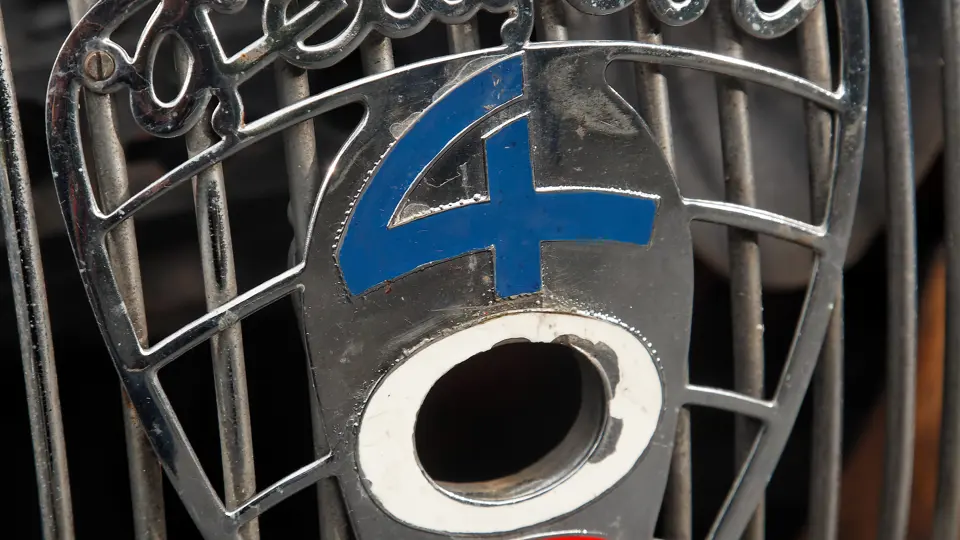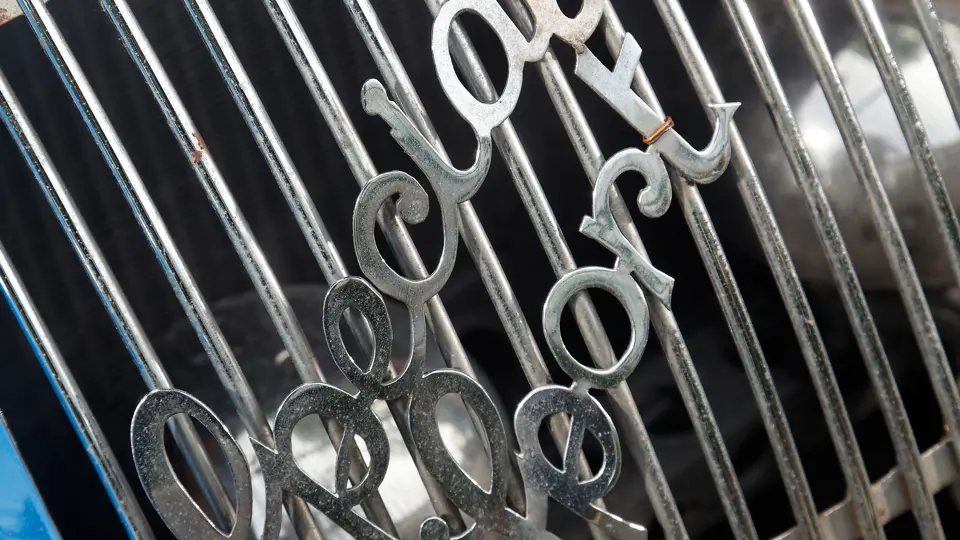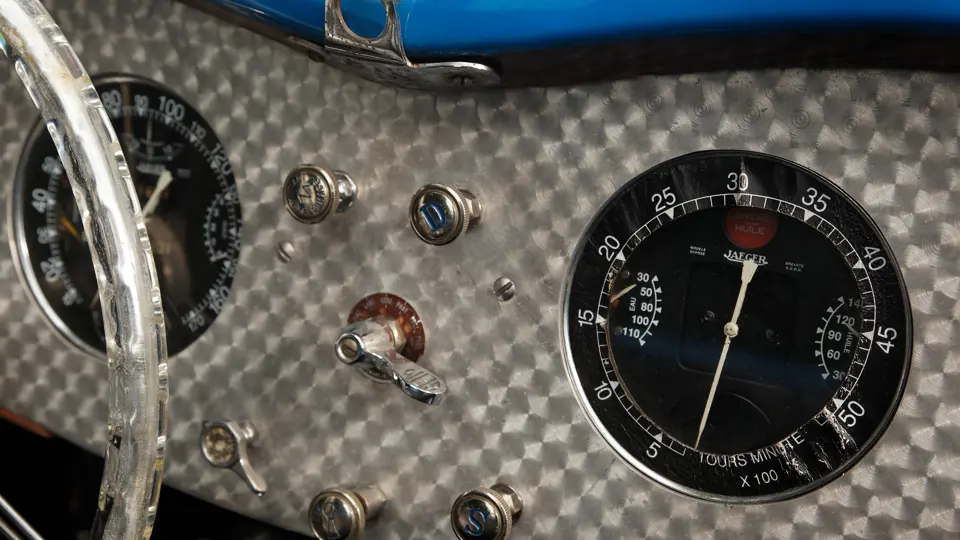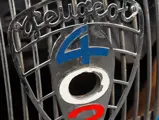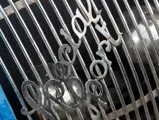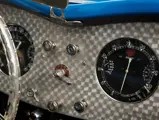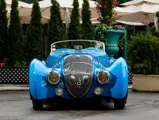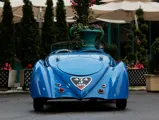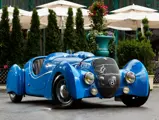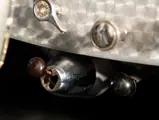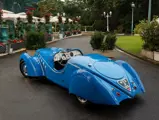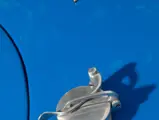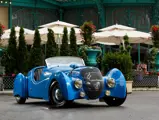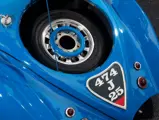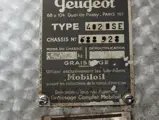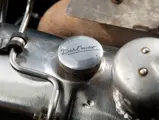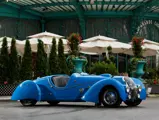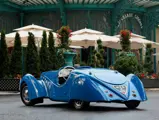Also, should this vehicle remain in the United States, 2.5% duty on the hammer price is applicable.
Chassis Type 402 DSE. 70 bhp, 1,991 cc OHV inline four-cylinder engine, dual carburetors, Cotal preselector four-speed gearbox, independent front suspension with double wishbones, transverse semi-elliptic leaf spring and friction dampers, live rear axle with semi-elliptic leaf springs and friction dampers, and four-wheel drum brakes. Wheelbase: 113.4"
• One of 105 examples in three different body styles
• Approximately 30 survivors of all types
• Single ownership since 1987
By the early-1930s, Emile Darl’mat was a Parisian Peugeot dealer, one of the world’s largest, and he had a flair for adventure. Well-known and highly regarded in racing circles, Darl’mat tirelessly sought to return Peugeot to the motorsports dominance it enjoyed immediately before and after World War I, by creating special Peugeot-based automobiles with leading-edge performance and styling. In fact, Darl’mat was so well-respected that he enjoyed access to Peugeot’s considerable factory resources.
To fulfill his mission, Darl’mat also formed close working relationships with Paris coachbuilder Marcel Pourtout and gifted designer Georges Paulin. Darl’mat first collaborated with Pourtout on a car for the 1927 Salon de l’Automobile and with Paulin on a Peugeot 301 with streamlined bodywork, which was created for display at the 1933 Chicago World’s Fair. While Paulin’s early profession was dentistry, automobile design was his true passion. He gained prominence by developing and patenting an automatic retractable metal roof mechanism, predating the Ford Skyliner of the late-1950s. Paulin and Pourtout planned to build it on a Peugeot 301 chassis, but Peugeot initially considered the roof mechanism to be overly complicated. Undaunted, Paulin and Pourtout purchased bare chassis from Darl’mat and constructed the cars, christened “Eclipse,” on their own. Pourtout’s customers were enthusiastic, and a companion model based on the larger 601 chassis was also offered. Their popularity was such that Peugeot licensed the design from Paulin and produced 430 retractable-hardtop 402 models, dubbed the 402 BL Eclipse Décapotable, between 1935 and 1939.
Next, Darl’mat conceived a light sporting model of Peugeot’s 302 that would be easily serviced by Peugeot’s dealer network. Putting the two-liter engine of the 402 into the lighter 302 chassis, Darl’mat naturally chose sporting bodywork from Pourtout. This, in turn, involved Georges Paulin, who penned a flowing, teardrop-winged body with a vestigial boat-tail that endures today as a benchmark of inter-war French design. Other unique design cues included a flowing grille, medallion-shaped hood side vents, and heart-shaped rear license-plate housing. These lightweight bodies were constructed from thin aluminum sheets, hand-formed over wooden bucks, and their sleek lines were perfected in the wind tunnel.
Combined with a tuned two-liter, overhead-valve, four-cylinder engine with dual carburetors and a stout Cotal four-speed preselector gearbox, the Darl’mat 302/402 was a remarkable performer on the road and track alike. Competition versions, remarkably similar to their road-going stable-mates, were very successful. They competed at Le Mans in both 1937 and 1938, achieving a Sterling Class victory in the latter year. Later production examples were built using a lightened, or legere, 402 chassis and all sold well. In addition to their wonderful driving dynamics, numerous examples graced the era’s finest concours d’elegance, and enthusiasm was only dampened by the clouds of war.
The example presented here is one of the more desirable later examples built on the 402 DSE chassis. The “DSE” stands for “Darl'mat Sport à boîte de vitesses Electromagnétique,” with electromagnetic referring to the Cotal four-speed gearbox. Chassis 688 928 was owned by a gentleman in France from 1981 to 1987, and then passed into the current ownership. Finished in French Blue, this Peugeot retains all of its correct, original exterior badging and excellent chrome and brightwork. It was fully restored by the previous owner using all of the original components. The car was stripped down to the bare chassis and rebuilt from the ground up. This included restoration of the chassis itself, as well as the suspension and braking system. The original engine was fully rebuilt and is believed to have only 15,358 original kilometers and the original Cotal preselector four-speed gearbox. The car is reported to run very well, as do the support systems, including the electrical and charging systems. The wheels are shod with new tires.
Complementing the attractive exterior is black leather upholstery with black carpeting and a matching black tonneau cover. Although there is some wear evident to the upholstery and carpeting, there is no undue wear, and everything appears well looked after. There are attractive touches, including the engine turned aluminum dash and the special “banjo-style” steering wheel with Bakelite rim, which reads “Peugeot Darl’mat” around the center ring. Bakelite was a new material and was widely used on French cars of this era, and the wheel was among the options that could further customize these special cars; 688 928 also has a roll-down windscreen and a slightly unique hood bulge.
The engine bay appears to be correct and complete with all original equipment used. It does show signs of use over the last several decades but remains presentable as is. Most importantly, the firewall retains the original chassis tag, as well as a separate distributor tag from Darl’mat. Accompanying receipts indicate that this car has been thoroughly serviced in 2010 and document a new clutch, brake repairs, oil and fluid service, and a thorough detailing, which was completed just prior to its offering in Monterey.
In all, just 105 Peugeot Darl’mats were built, including six for racing. Production was comprised of 53 roadsters with low doors, like the one offered, 20 coupes, and 32 cabriolets; 38 of these were built as combination 302/402 models, while the remaining 67 examples were built on the lightened 402 chassis. It is estimated that 30 examples of all types and body styles have survived. A top cruising speed was claimed at 150 kilometers an hour, which was exceptional for the late-1930s. When this 402 left the Peugeot factory in Sochaux, bound for Pourtout’s workshop in Rueil-Malmaison, to be fitted with the rakish Paulin-designed bodies, it was intended to be driven in a spirited fashion, and it still beckons for the same treatment from its new owner.
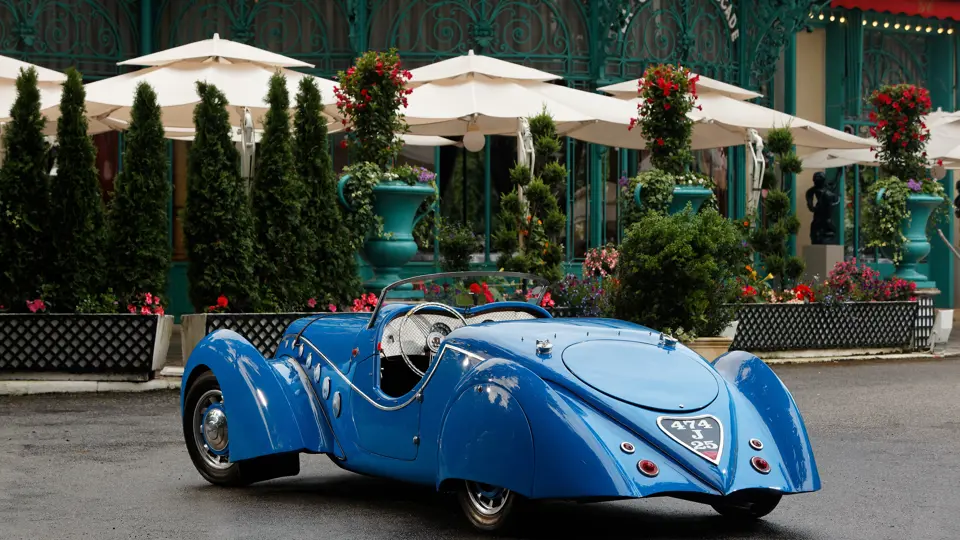
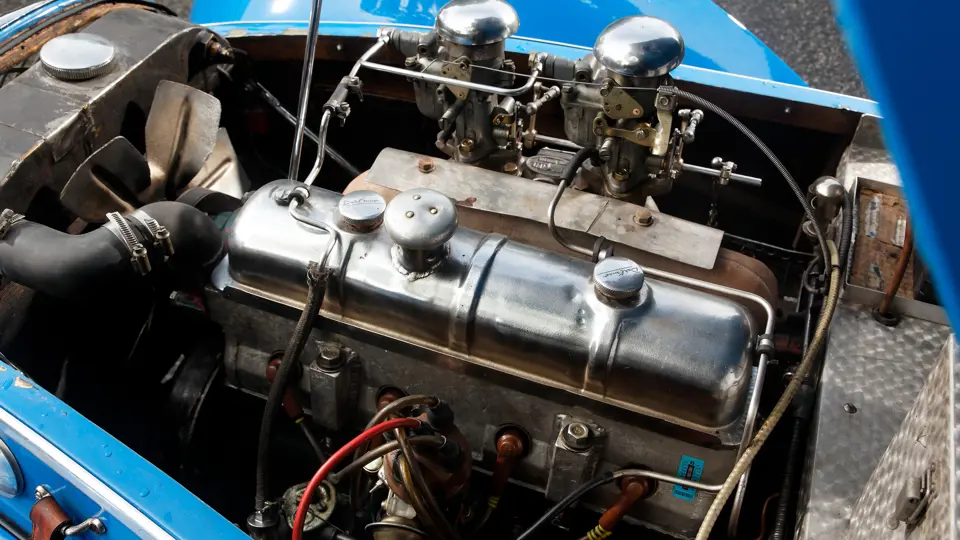




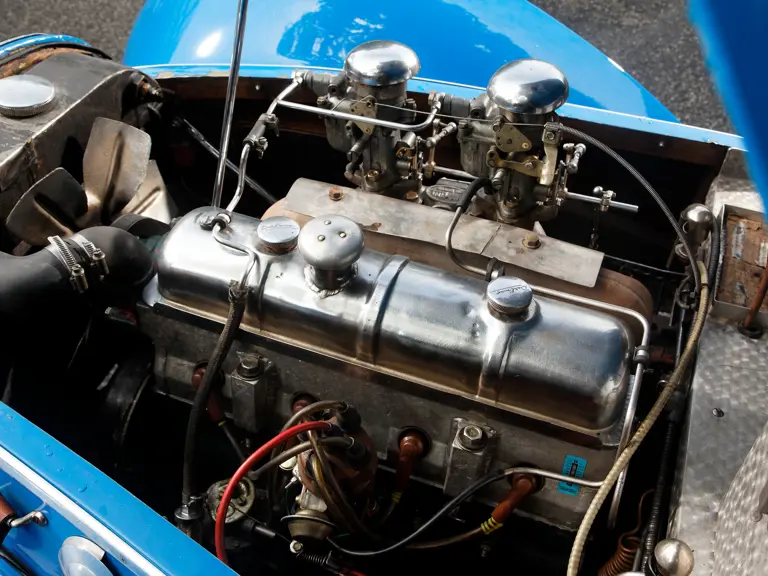
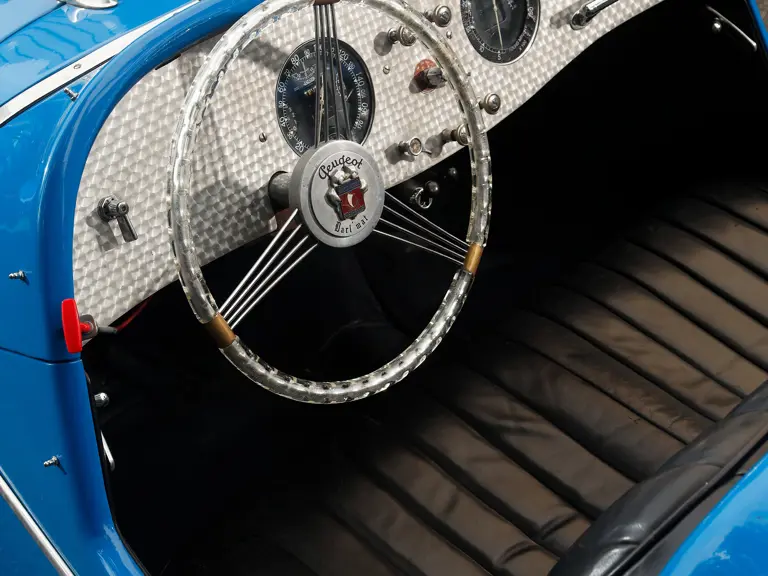
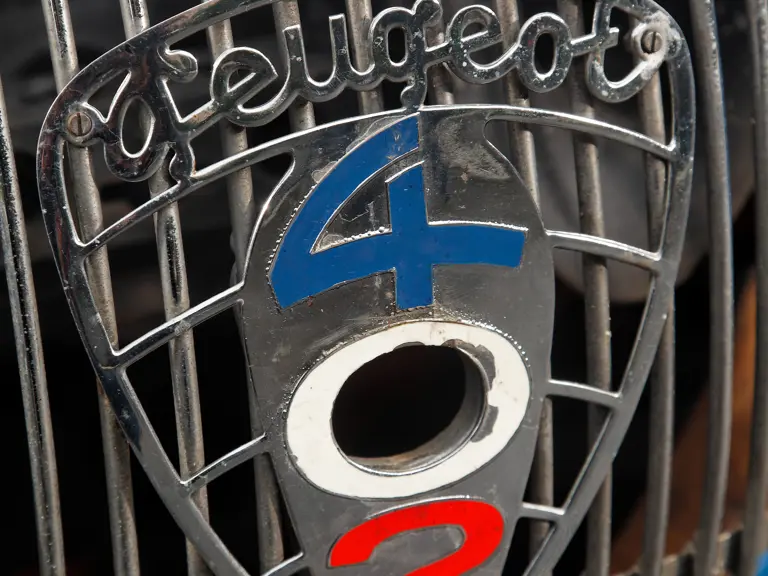
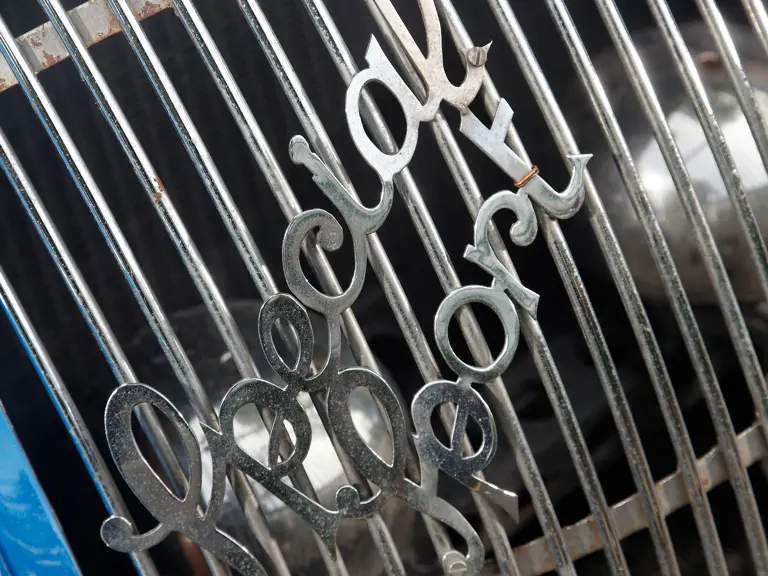


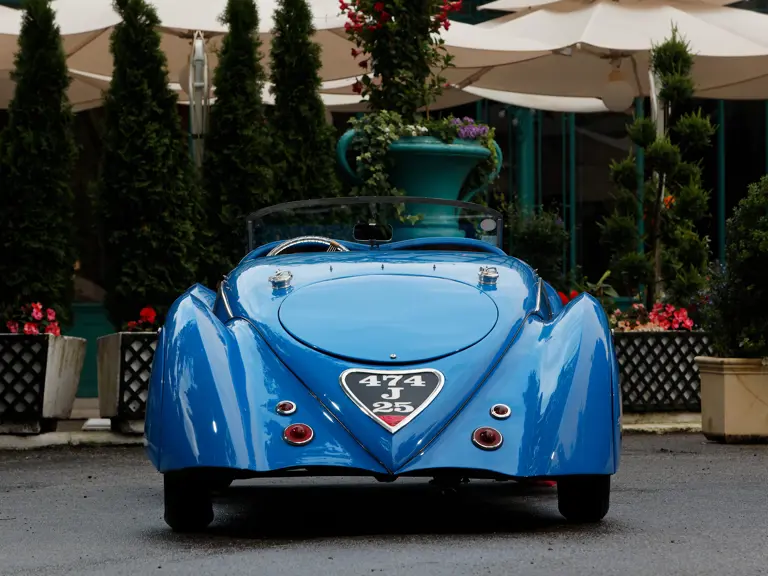
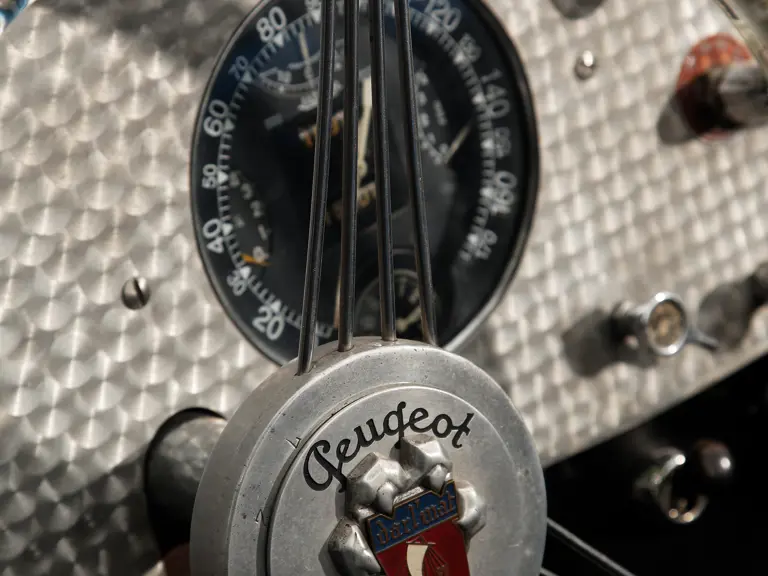
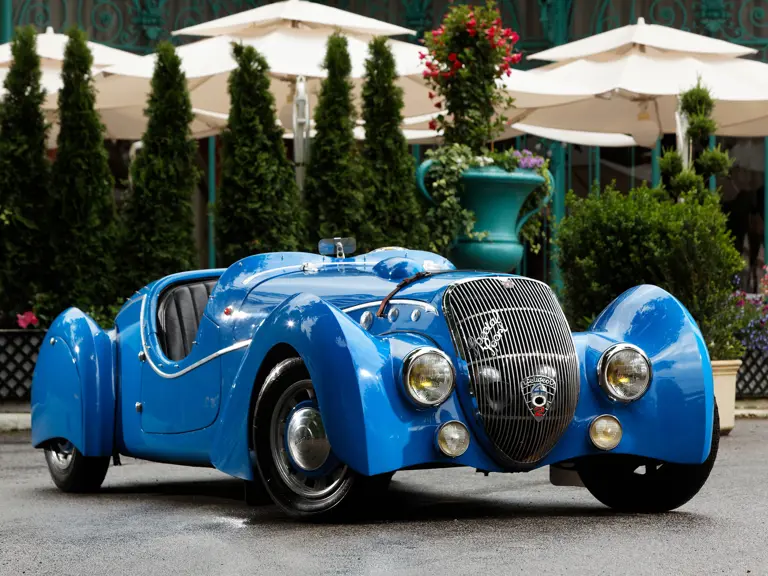
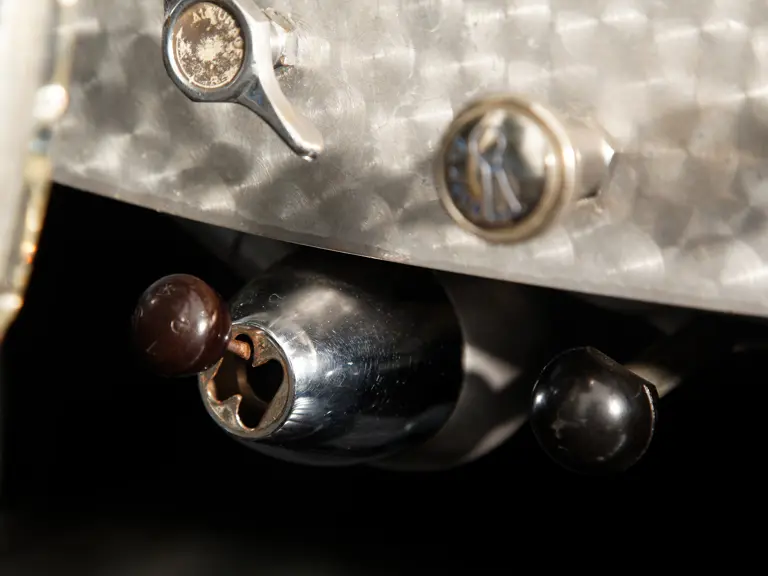
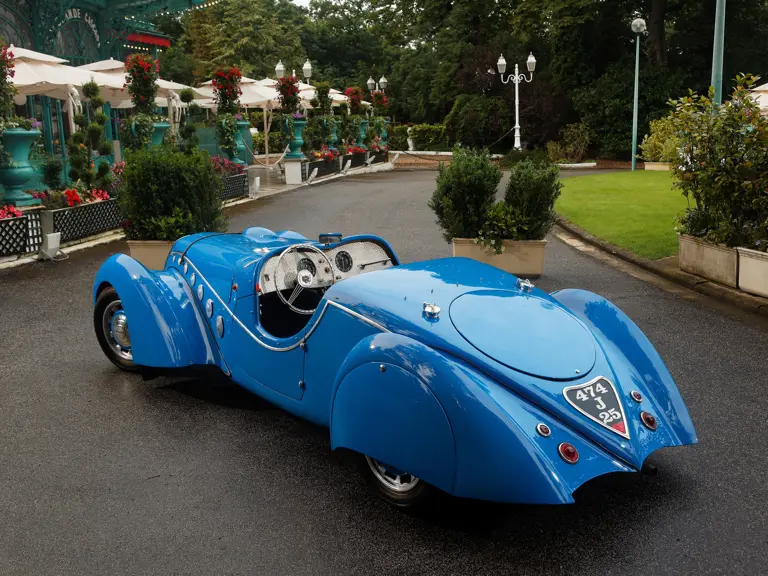
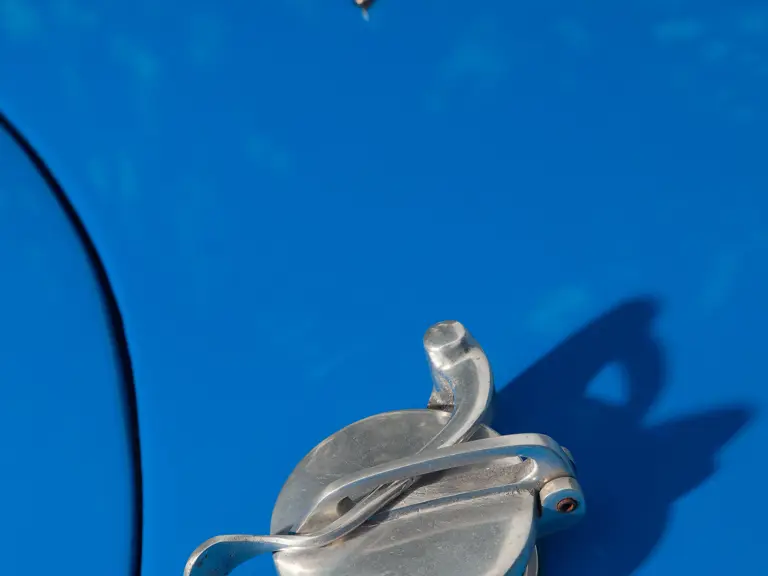
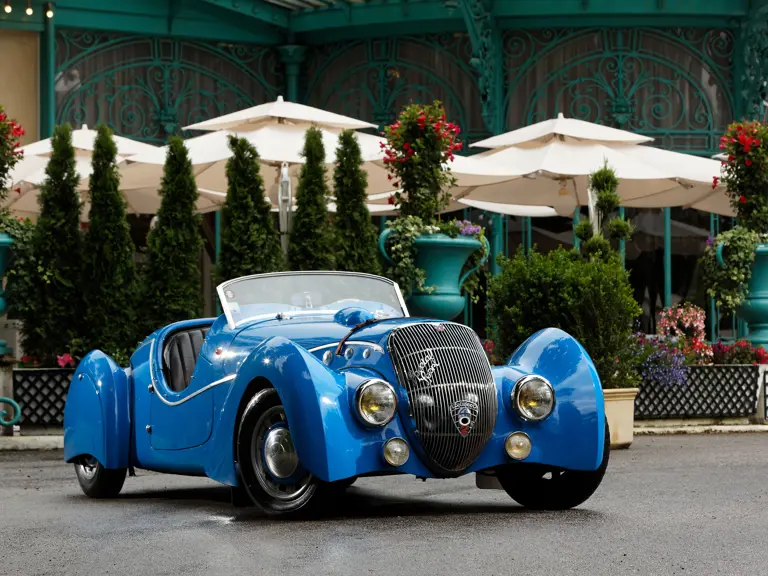
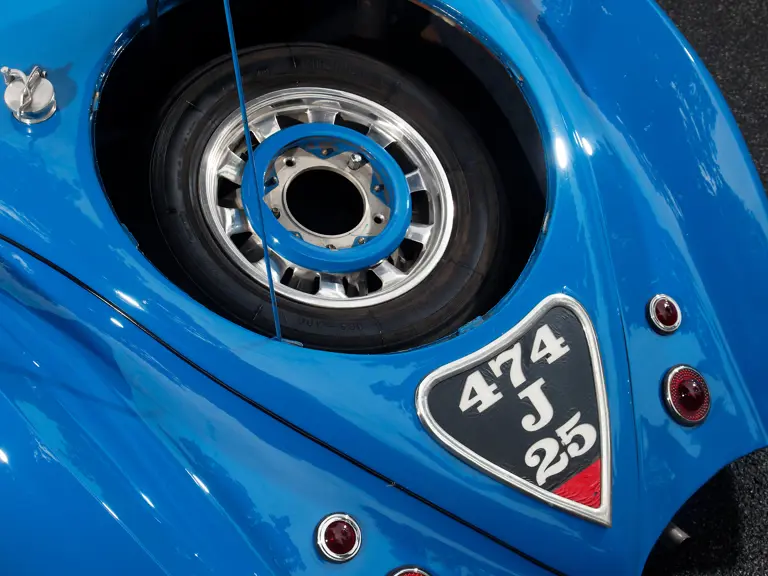
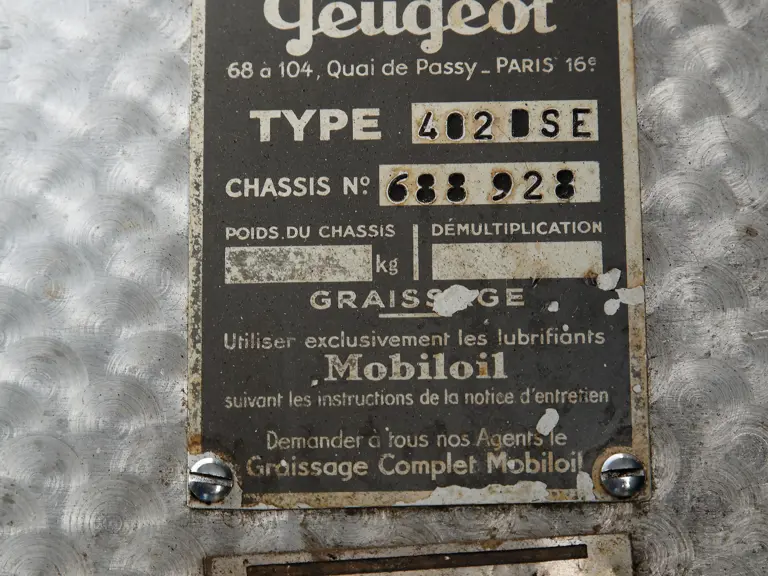
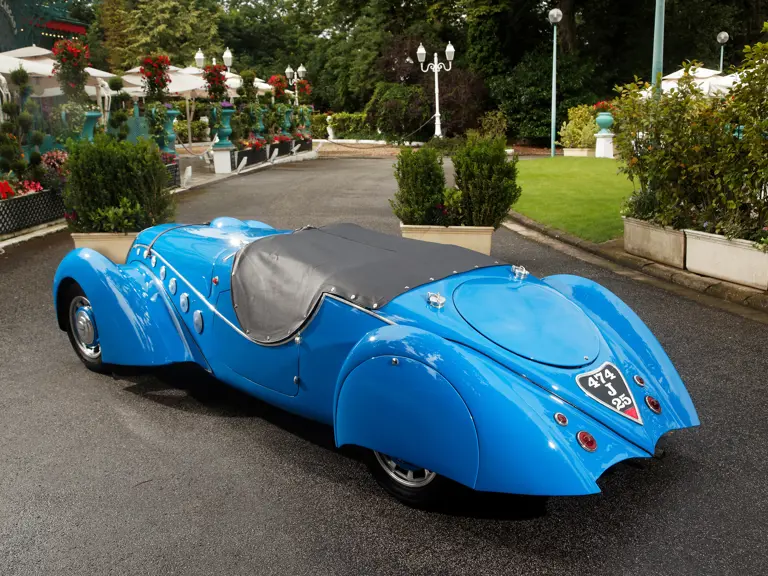
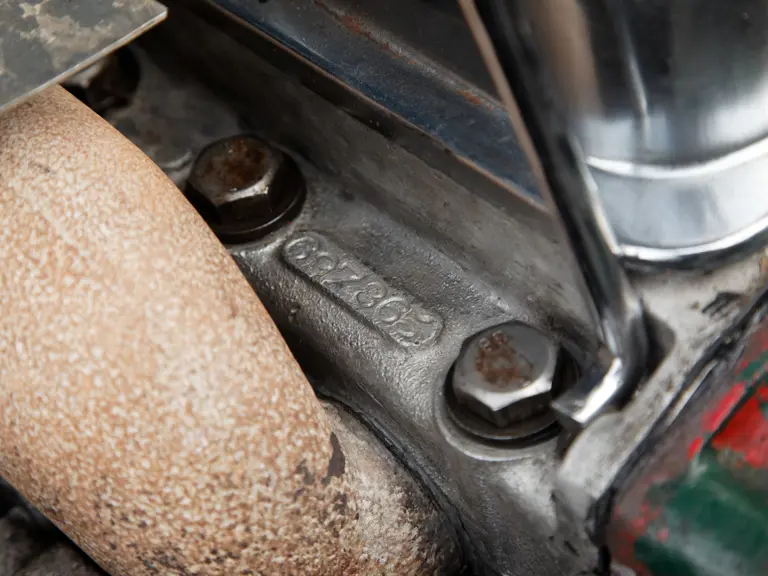
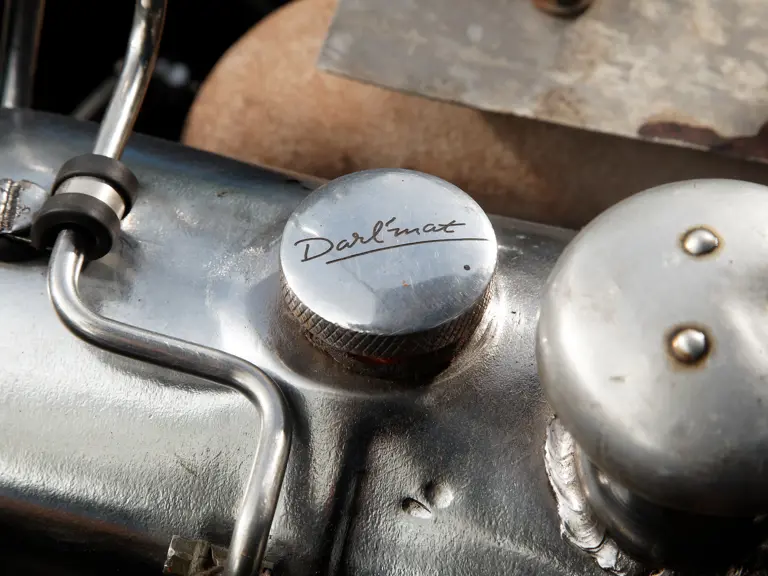
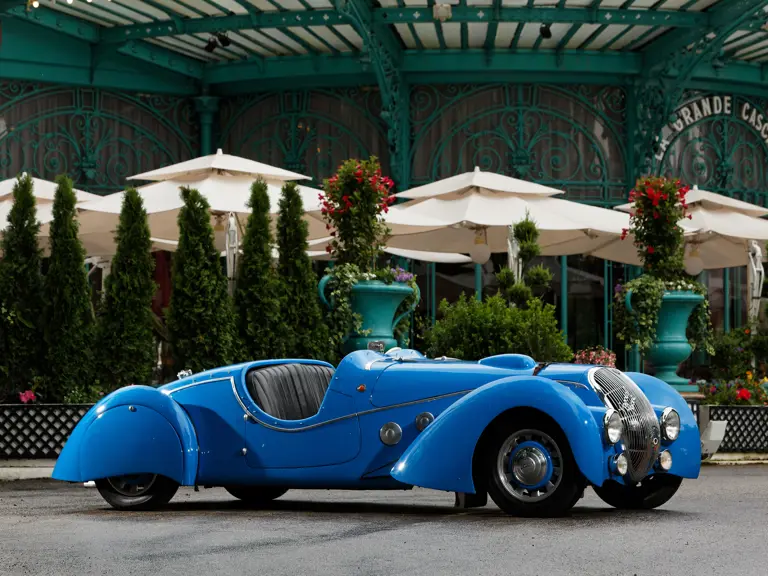
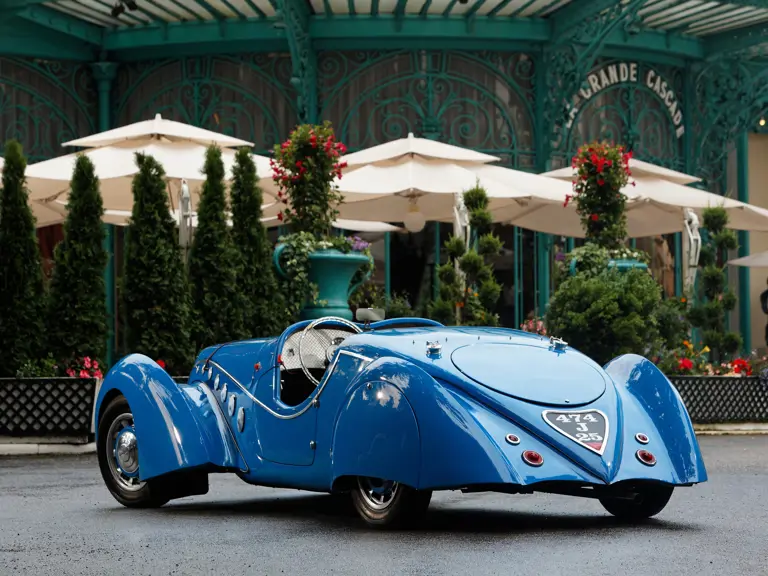
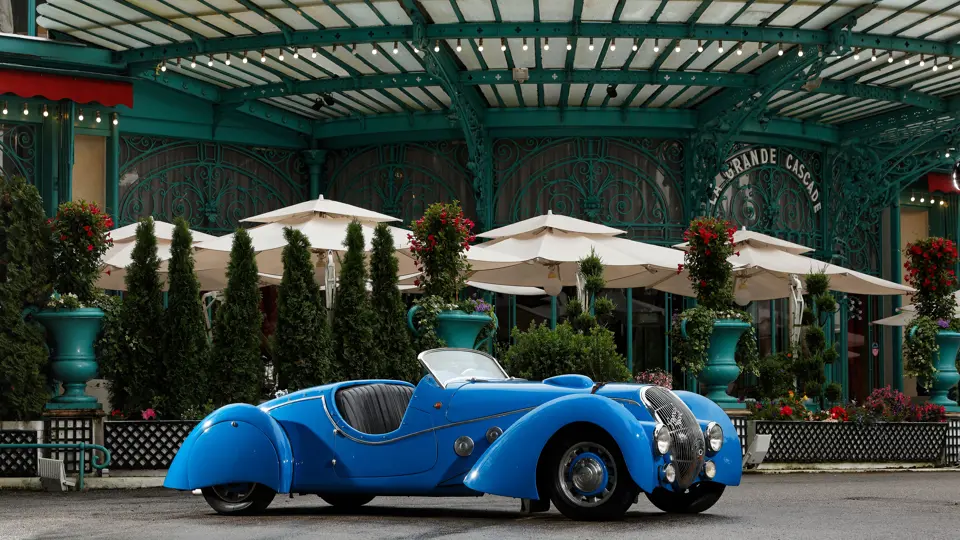
 | Monterey, California
| Monterey, California
